#I have an akita and the dog was a french bulldog
Explore tagged Tumblr posts
Text
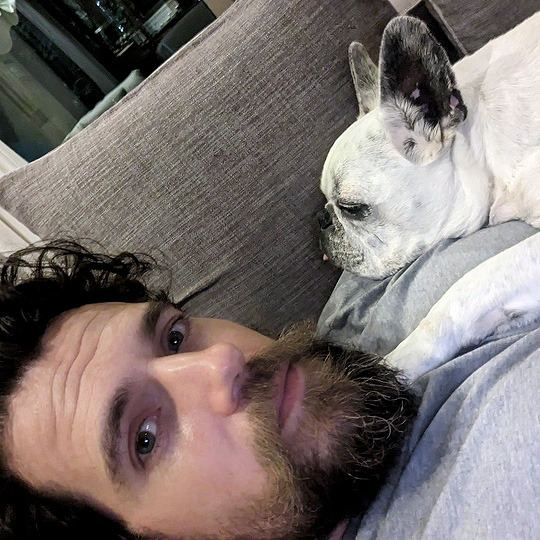
HENRYCAVILL Today marks one year since Meat (our french bulldog) decided to shuffle off this mortal plane and continue on his journey. I have to say, I hadn't previously felt pain quite like the pain I felt when Meat died. I'd only know him for three years, but in those three years he and I made such incredible progress together, and he completely changed my outlook on French Bulldogs. He was deaf, so I learned how to use body language to communicate properly with him. He couldn't stand other dogs, but we got to a place of tolerance with Kal (my Akita). He survived a very complicated cancer removal surgery. He travelled to far flung lands without complaint. He would come looking for me at night if I stayed up playing computer games too late. He would be ferociously protective over Natalie, but learned to trust Kal and me for guidance. He fell ill and recovered a number of times. He enjoyed many a backpack ride once he got too tired to make any decent length walks. At the end he fell ill with a pneumonia. I'll never forget the expression on his face, desperately asking me for help on the way to the vet in Turkey because he couldn't breath. Once there, however, he held strong and recovered to such a point that we felt hope, but it turns out he was just waiting for us to bring him home. He passed away peacefully in England. Thinking of him always brings great sadness, but also great joy. We'll miss him as long as we live, but wouldn't live nearly as richly had we never have known him. Journey well Meatboi.
211 notes
·
View notes
Text
Twice Series
OC’s dog gift to the kids
(These are the options submitted to me. They are all good choices. I can see some with regular sized dogs as well has large dogs. Purpose is for the kids to have a friend and protecter while they go out and explore their new house and large backyard.
Golden Retriever

French Bulldog

Husky

German Shepherd

Akita

Shiba Inu

Samoyed

coated retriever - collie mix

St. Bernard

Newfoundland

13 notes
·
View notes
Note
Jaz I came up with a new game! I also sent this to Allie @molosseraptor to see what she thought. Honestly I’d love to hear what any of the dogblrs who are/were professional trainers think!
Train, Own, Rehome (~Fuck, Marry, Kill)
….Interesting….breed mixes I have seen advertised on Craigslist
Option 1: Border Collie X Akita
Option 2: Husky X French Bulldog
Option 3: Chihuahua X Blue Heeler
Thanks for your time if you want to answer!
These are all Literally The Worst how could you do this to me.
If I had to own any of them I'd probably take the chihuahua/heeler. Not for any other reason than because that sounds like a chaos demon and a reinvention of the Asshole Terrier From Hell and fuck it why not.
For train I'd probably go with the bc/akita, only because I want to dissect its brain and possibly keep it in a jar. Like. What are you.
Rehome, the husky/frenchie. I've spent too long in dog training to fuck with badly bred huskys anymore, and I've worked too long at a vet clinic to want to deal with badly bred frenchies, and the combination of such??? NIGHTMARE no thank you.
24 notes
·
View notes
Text
So I was thinking about Pokemon dogs about what type of real world dog they'd be. (Not including the fox Pokemon like Vulpix, the legendaries, and the Eevee line because what are they even?) Other folks have their ideas, I'm sure, but these are mine.

Growlithe: Bernese Mountain Dogs, Appenzeller Sennenhund, Briards, mid-sized mountain dogs

Arcanine: livestock guardian breeds like the Great Pyrenees, Caucasian Shepherds, Anatolian shepherds, Kengals, "call an ambulance, but not for me" dogs

Snubbull: English or French Bulldogs

Granbull: American Bulldogs, Boxers

Houndour: Rottweilers, Pinschers

Houndoom: Beaucerons, Great Danes, Wolfhounds, Deerhounds

Smeargle: Beagles, Harriers, Foxhounds

Poochyena: Shetland Sheepdog, Australian Sheepdog

Mightyena: Belgian Malinois, German Shepherds, Calupoh, high wolf content dogs

Electrike: Rat terriers, Jack Russells, high energy small terriers

Manectric: border collies, rough/smooth collies, high agility breeds

Riolu: Basenji, Bedouin Sheepdog

Lucario: Carolina dog, Pharoah Hound

Lillipup: Yorkshire Terrier, West Highland Terriers

Herdier: Scottish Terrier, Skye Terrier, Miniature Schnauzer

Stoutland: Standard Schnauzer, Airdale Terriers, Kerry Blue Terriers (this line is all long haired or bearded terriers of various sizes)

Furfrou: Poodle, Portuguese Water Dog

Rockruff: various small or mid sized Spitz breeds like the Keeshond, huskies, the Shiba, and Chow Chows (my own dog, a shar pei/husky mix, would be a Rockruff)

Lycanroc: large Spitz or arctic breeds like the Malamute, Akita, Greenland Dog, high wolf content dogs

Yamper: corgis and heelers

Boltund: Greyhounds, Salukis, Borzoi, Azawakh, other sighthounds

Fidough: Pomeranians, Cocker Spaniels, small white crusty dogs

Duchsbun: Dachshund, Basset Hound

Maschiff: Pit bulls, bull terriers, American Staffordshire terriers, "bully breeds"

Mabosstiff: Cane Corsos, Dogue de Bordeaux, English Mastiff, other mastiff and Molosser breeds

Greavard: Puli, Havanese, small corded dog breeds

Houndstone: Old English Sheepdog, Komondor, Bergamasco Sheepdog, Spanish Water Dog, large corded dog breeds
5 notes
·
View notes
Text
Skell's Opinions - June 23 Polls
They're funny, I swear. Please remember that these are just virtual pets and stuffed animals. I will not rise from the depths of hell to strike you down for liking them (as metal as that would be).
Something about pets with spots just looks nasty. The signature German shorthaired pointer has a cute plush, but please, keep those in-game spots away from me. Also earth fawn looks like leafeon. Here's a cute image of the dog plush as compensation to whoever this take pisses off.
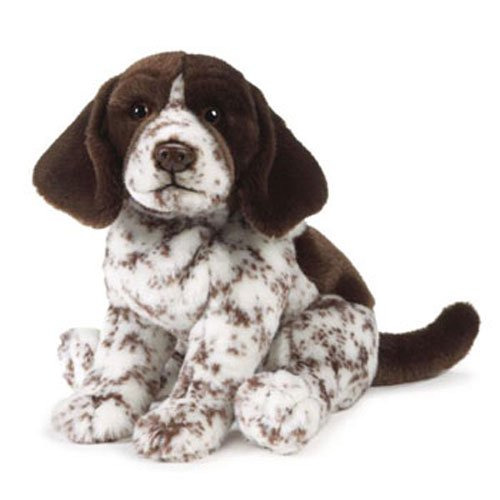
Reindeer calf's smile sees something in my soul that even I didn't know was there. Fear. It's some kind of fear. He looks cute in-game though, promise. I have to give it to purple goldfish, however, for having the cooler pet specific item (and being purple).

Honestly, poodle and mocha pup are equally as good. Defaulting to poodle for simply being more OG.
Wow I hate the cute octopus, but I hate the pioneer pony's patterning more. From afar, it looks like its flesh is falling off the bone. Put it out of its misery.
I can't stop thinking about how the kiger mustang looks like Chris Mclean's ponysona. HELP.
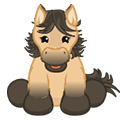

Lollipop snail looks like something out of Turbo (derogatory).
Akita puppy comes with a cherry blossom hot tub??? Yeah no springy kangaroo is dust.

We did it. We found the worst Webkinz. It's texting puppy.
Literally what is on top of groovy gorilla's head, it looks like a sea anemone gone parasitic.
Ya'll. Ya'll. The Rottweiler has a pool table with a chain on it. And his food is served in a studded bracelet. The Webkinz I never knew I needed.
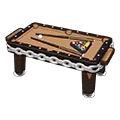

Hoppy floppy bunny wins by virtue of not being celestial unicorn.
Signature horse is VERY cute, but I had to side with Rockerz cat for being horrendous in the most endearing scene-kid-wannabe way.
Weimaraner is the obvious choice when up against a print catastrophe. What is wrong with you all for voting musical Dalmatian? There's worse prints, but I stand firmly on my ground.
I dislike the tinker pets, but I hate the goblins.
Brilliant penguin has a way cooler pet specific item than 2023 French bulldog.

Ok, tanuki versus axolotl is a wild matchup. These two are tanks that could easily destroy many other foes, and yet they wound up together. Pity. I sided with tanuki for weeb points.
I'll admit, I voted for glamorous gorilla ironically.
*Sigh*, do I have to pick the cat? Well, black panther cub was up against ballet pup, so I guess I do.
Kiwi parrot is a very cute concept, but I'm handing it to the sea otter for also being cute, and, more importantly, having a plush.
Chonk boi expectation versus adult human man reality:

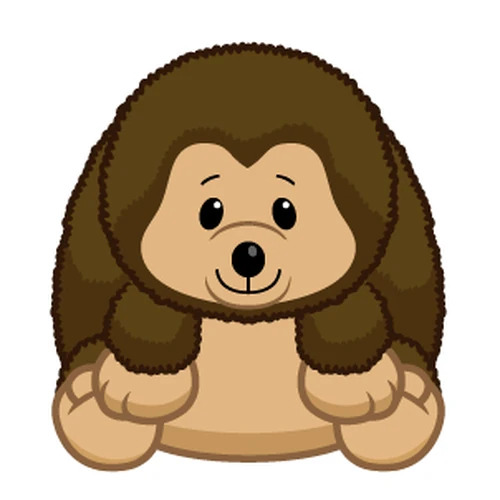
White swan. Based.
Cocoa dinosaur is a lesson in how to do Valentine's day without inadvertently telling me you only learned 2 colors in preschool (pink and red).
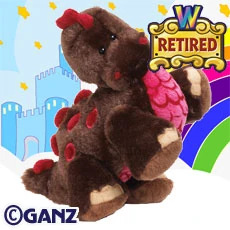
Angora bunny has a cute plush, but they really dropped the ball with the wing-like ears. Buttons bear is stinkin' cute, however, and comes with a little sewing machine. Bless.
Basset hound. It has everything. Being a classic pet, having a cute plush, and, most importantly, being able to wear more than just shirts, hats, and glasses. Sorry not sorry, blue bay dolphin.
Signature cheetah is so yellow, it looks like cheese. I like cheese.
The boxer is inoffensive, but sheep is baby.
7 notes
·
View notes
Text
Taas yksi “älkää pliis tehkö tätä”-tilanne
Siis ihan helvetin kiva kun oon menossa sisälle Pyryn kanssa ja sivusilmällä näen että ranskalaine bulldoggi juoksee ilman hihnaa, pantaa tai valjaita meitä kohti.
Tosi mukavaa pitää Pyrystä kiinni ettei se käänny ja rupee puolustamaan itteään, lisää siihen että se koittaa varoittaa tätä lähestyvää koiraa samalla kun koitan häätää koiraa pois joka on parikymmentä senttiä kaukana Pyryn ahterista.
No totta kai se omistaja tulee, ottaa koiran ja lähtee pois enne kuin pääsen sanomaan mitään.
Mikä on kun julkisessa paikassa annetaan koiran olla vapaana? En mä Pyryn hengestä oo huolissani mutta jos se Pyry olisi säikähtänyt pahemman kerran niin se olis sairaalareissu sille pienemmälle koiralle.
#että sitä rataa#am shut up#shut up am#my stuff#finnish#if you are curious what I am talking about#a dog was free and it ran towards my dog#I have an akita and the dog was a french bulldog#needles to say I was not a fan#I can tell the full story 2 mutuals- just dm me
5 notes
·
View notes
Text
How long do our dogs really live?
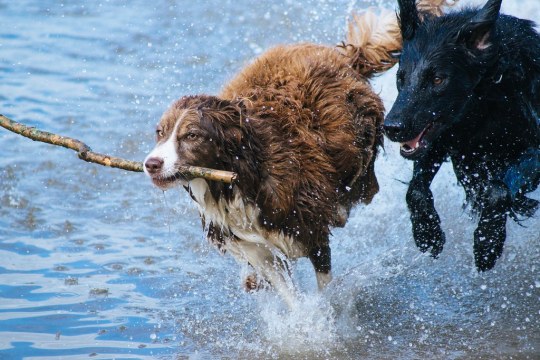
If you read articles online about specific dog breeds or about dog breeds in general, they usually say this and that breed lives “12-14 years”, “10-12 years”, or, for the biggest and heaviest breeds, “8-10 years”.
But rarely if ever are sources mentioned. Instead it seems to mainly be a copy-paste assumption passed around the internet, where of course the heaviest and least healthy breeds are assumed to live “8-10 years”, the smallest and healthiest breeds “12-16 years”, and the rest somewhere in between.
Thankfully, Kennel Clubs have conducted studies on this exact topic, giving us a better picture. The United Kingdom’s KC did one study in 2004 and one in 2014.
The median among all dogs in the KC 2004 study was 11.25 years, and in the 2014 study, only 10 years. This is of course not a benchmark as “good lifespan”, simply the average among the purebred dogs in the Kennel Club surveys.
I will sort them by longest to shortest, and the studies are 2004 / 2014, and for some breeds, an additional Finnish Kennel Club study. The decimals are by %, not months. (I.e. 3 months is 25% = .25, 9 months are 75% = .75, etc.).
Of course, this is by no means perfect, as the surveys usually had fairly low response rates, and the numbers of deceased dogs reported are sometimes very small (those that consist of a sample of less than 20 dogs are marked cursive, and those with less than 10 dogs were mostly discarded, as they are highly unreliable).
In the 2014 study, the KC itself omitted the median age at death for any breed with less than 30 deceased dogs reported.
The KC also notes that the two studies were carried out differently, and that the second had only a third of the data of the first one, so they should not be compared directly.
The studies also include deaths caused by accidents, like being hit by a car or being killed by another animal, as well as being put down for behavior problems.
It is however likely to be far more reliable than a quick Google or Wikipedia search.

Very long-lived breeds
Toy Poodle: 14.7 years / N/A Tibetan Spaniel: 14.4 years / N/A Lhasa Apso: 14.3 years / N/A Swedish Vallhund: 14.2 years / N/A Miniature Poodle: 13.9 years / N/A Basenji: 13.6 years / N/A Italian Greyhound: 13.5 years / N/A Bedlington Terrier: 13.4 years / N/A Norwich Terrier: 13.4 years / N/A Cairn Terrier: 14 / 12.5 years Fox Terrier: 13.2 years / N/A Shih-Tzu: 13.2 years / N/A Schipperke: 13 years / N/A West Highland White Terrier: N/A / 13 years Border Terrier: 14 / 12 years Bearded Collie: 13.5 / 12.5 years

Average lifespan breeds
Bichon Frisé: 12.9 years / N/A Brittany: 12.9 years / N/A Hovawart: 12.9 years / N/A Manchester Terrier: 12.8 years / N/A Dachshund: 12.7 years / N/A Welsh Terrier: 12.7 years / N/A Norwegian Buhund: 12.7 years / N/A Siberian Husky: 12.6 years / N/A Soft-Coated Wheaten Terrier: 12.5 years / N/A Belgian Shepherd: 12.5 years / N/A Samoyed: 12.5 years / N/A Welsh Springer Spaniel: 12.6 / 12 years Maltese: 12.25 years / N/A Sealyham Terrier: 12.25 years / N/A Welsh Corgi Pembroke: 12.25 years / N/A Welsh Corgi Cardigan: 12.2 years / N/A Dandie Dinmont Terrier: 12.2 years / N/A Tibetan Terrier: 12.2 years / N/A Keeshond: 12.2 years / N/A Border Collie: 12.25 / 12 years Golden Retriever: 12.25 / 12 years Basset Griffon Vendéen: 12.1 years / N/A Australian Terrier: 12.1 years / N/A English Toy Terrier: 12 years / N/A Standard Poodle: 12 / 12 years Griffon Bruxellois: 12 years / N/A Saluki: 12 years / N/A Rough Collie: N/A / 12 years
Afghan Hound: 11.9 years / N/A Tibetan Mastiff: 11.9 years / N/A Staffordshire Bull Terrier: 12.75 / 11 years Pharaoh Hound: 11.8 years / N/A Labrador Retriever: 12.25 / 11 years Shetland Sheepdog: 12.5 / 11 years Lancashire Heeler: 11.75 years / N/A Dalmatian: 12.5 / 11 years Pointer: 12.4 / 11 years Field Spaniel: 11.7 years / N/A Australian Cattle Dog: 11.7 years / N/A Whippet: 12.8 / 10 years Gordon Setter: 11.1 / 12 years English Springer Spaniel: 12 / 11 years Irish Setter: 12 / 11 years Affenpinscher: 11.4 years / N/A Pekingese: 11.4 years German Pinscher: 11.4 years / N/A Irish Red and White Setter: 11.4 years / N/A Beagle: 12.7 / 10 years Grosser Münsterländer: 11.3 years / N/A Bouvier des Flandres: 11.3 years / N/A Basset Hound: 11.3 years / N/A English Setter: 11.6 / 11 years German Spitz: 11.3 years / N/A Sussex Spaniel: 11.2 years / N/A Finnish Spitz: 11.2 years / N/A Briard: 11.2 years / N/A Cocker Spaniel: 11.2 / 11 years Miniature Schnauzer: 12.1 / 10 years German Shorthaired Pointer: 12 / 10 years Vizsla (smooth): N/A / 11 years Skye Terrier: 11 years / N/A Pug: 11 years / N/A

Lower than average lifespan breeds
Boston Terrier: 10.9 years / N/A Old English Sheepdog: 10.75 / 11 years Pyrenean Sheepdog: N/A / N/A / 10.8 years Anatolian Shepherd: 10.75 years / N/A Airedale Terrier: 10.75 / 10 years Chesapeake Bay Retriever: 10.75 years / N/A Curly-coated Retriever: 10.75 years / N/A Cavalier King Charles Spaniel: 11.4 / 10 years Alaskan Malamute: 10.7 years / N/A Weimaraner: 11.2 / 10 years Glen of Imaal Terrier: 10.4 years (only 6 dogs) / N/A Basset Fauve de Bretagne: 10.4 years / N/A American Cocker Spaniel: 10.3 years / N/A Scottish Terrier: 10.25 years / N/A Chinese Crested: 10.1 years / N/A Rhodesian Ridgeback: 11 / 9 years German Wirehaired Pointer: 10 years / N/A German Shepherd: N/A / 10 years Giant Schnauzer: 10 years / N/A Maremma: 10 years / N/A
Flat-coated Retriever: 9.8 / 10 years Newfoundland: 9.7 / 10 years American Akita: 9.8 years / N/A Wirehaired Vizsla: 9.8 years / N/A Pomeranian: 9.7 years / N/A Boxer: 10.25 / 9 years Polski Owczarek Nizinny: 9.6 years / N/A Irish Water Spaniel: 9.3 years / N/A Japanese Chin: 9.25 years / N/A Dobermann: 10.5 / 8 years Komondor: 9.2 years / N/A Borzoi: 9.1 years / N/A Greyhound: 9.1 years / N/A Australian Shepherd: 9 years / N/A French Bulldog: 9 years / N/A Spinone: 9 / 9 years

Very short-lived breeds
Scottish Deerhound: 8.7 years / N/A Finnish Lapphund: 7.3 (only 5 dogs) / N/A / 10 years Bull Terrier: 10 / 7 years Rottweiler: 8.9 / 8 years Bernese Mountain Dog: 8 years / 8 years Český Terrier: 8.4 (only 9 dogs) / N/A / 8.75 years Leonberger: 7.1 / 9 years Nova Scotia Duck Tolling Retriever: 8 (only 9 dogs) / N/A / 7.9 years Bullmastiff: 7.5 / 7 / 6.75 years Kooikerhondje: 3.9 years (only 7 dogs, the oldest was 13.9 years old) / N/A / 7.3 years Bloodhound: 6.75 years Irish Wolfhound: 7 / 6.5 years Great Dane: 6.5 / 7 years Saint Bernard: 7 / N/A / 5.75 years Miniature Bull Terrier: 6.1 years / N/A English Bulldog: 6.25 / 6 / 5.3 years Dogue de Bordeaux: 3.8 years (only 5 dogs, the oldest was 16 years old) / N/A / 6 years, and yet another study put them at 5.3 years Neapolitan Mastiff: N/A / N/A / 4.9 years Russian Black Terrier: 1.75 (4 dogs, the oldest was 11.5 years old) / N/A / 4.5 years
I know we don’t like to anthropomorphize, but this is the equivalent of a number of families or clans of humans - that are all equal in wealth, diet, and access to healthcare - but their average lifespan differs from 95 years to 38 years simply due to genetic illnesses.
It’s THAT extreme.
While diet can certainly affect the decrease in longevity in dogs overall, there is no reason to think that certain breeds usually get poorer food or healthcare than other breeds.
57 notes
·
View notes
Text
Ok I made a giant list of anything I could think of!
Azerothian Dog Breeds!
THALASSIAN:
Pincer (Doberman)
Greyhound (Afghan)
Terrier (Rat)
Hound (Pharaoh)
Setter (Irish)
Borzoi
Ridgeback
(Fond of sleek, elegant, and powerful guard dogs and lap dogs with coats the color of fall)
DARNASSIAN:
Retriever
Whippet
Greyhound (Dogs that could keep up with the extremely fast sprints of the Kaldorei in dense forest, especially in cat or travel form, are very useful companions)
(Not very fond of dogs… Seem to be cat people)
GILNEAN:
Greyhound
Great Dane
Bull Mastiff
Husky
Leonberger
Bull-Terrier
(Fond of sturdy, heavy power breeds, good luck trying to find small dogs that originate from here. Lots of dusty brown/grey/black coated doggos... And lots of slobber)
WESTFALL:
Boxer
Shepherd (australian)
Terrier (Irish, Jack-Russell)
Mutts
Coonhound
(Lots of terrier type dogs to keep pests away from crops and to guard barns, think your typical farm field dogs)
ELWYNN:
Border Collie
Labrador
Beagle
Basset-Hound
Terrier (Welsh)
Setters (Gordon, English, Irish, etc)
Wolfhound
Pointers
Bull Dog
(Probably lots of hunting hounds that do well in heavily forested areas)
LORDAERON:
Deerhound (Scottish)
Shepherd (German)
Rottweiler
Pincer (Doberman)
Bloodhound
Schnauzer
Elkhound (Norwegian)
Wolfhound
(Fond of big yet lean and powerful hunting dogs/hounds, light colored coats are extremely rare)
DWARVEN:
Dachshund
Mountain Dog
Husky
Malamute
Akita
Eskimo Dog
Newfoundland Dog
Saint Bernard
(Fond of sturdy and resilient dogs with thick coats that can withstand extreme cold and underground caves, you’ll never see a short haired dwarven dog)
PANDARIAN:
Chow-Chow
Crested Dog (Chinese)
Shih-Tzu
Mastiff (Tibetan)
Shar-pei
Pekingese (popular traveling buddies for the Grummles!)
(Fond of lap dogs with coats that can be styled and maintained to display and show off)
SHALASSIAN:
Poodle
Dalmation
Pomeranian
Papillon
Spaniel (French, Cocker)
Bulldog (French)
Pug
Saluki
(Many little yappy lap dogs, all with bows or carried in purses and enchants on their fur; fond of dogs with beautiful/unique/interesting patterned coats)
VRYKUL:
Mountain dogs
Shepherds (German)
Pointers/Hounds
Bloodhounds
Weimaraner
Deerhound
Husky/Malamute/Akita
Wolfhound/Wolfdogs
(Massive aggressive dogs specially bred to fit the size and harsh cold of Northrend, many have their smaller more normal sized counterparts around other parts of Azeroth like the bloodhound and shepherds)
ORCISH:
Wolfdogs
Pitbull
Boxer
Mastiff (Bull, Neopolitan
Cane Corso
Dogue de Bordeaux
Boerboel
Rottweiler
Malamute
(As you can already tell, many wolves and wolfdog breeds here, extremely big and strong dogs with a fatal bite every time, but very snuggly and loyal to the death!)
SHU’HALO:
Mountain Dog (Bernese)
Saint Bernard
Labradors
Leonberger
Sheepdog
Vizsla
(Lots of gentle giants, mainly used for work and companionship, sometimes herding kodo! Fans of coats that accent and compliment nature well, such as white, brown, and blonde)
ZANDALRI/TROLL:
Xoloitzcuintli
Chihuahua
Terrier (Brazilian)
Dogo Argentino
Peruvian Inca Orchid
Pharaoh Hound
Ibizan Hound
(Typically smaller dogs that keep sneaky little saurids away from city streets and marketplaces; small dogs with little hair to protect from intense tropical heat and humidity; Forest trolls prefer dogs with thick, brown coats to blend in with the environment around them, and ice trolls have taken many of the breeds the Vrykul have bred)
Draenic:
Probably a lot of slender/lithe looking dogs like greyhounds, whippets, great danes, etc
And lapdogs!
But alien.
(Some of these were probably cross bred with orcish breeds on the Outlands, specifically in Shattrath to create therapy/working/guard dogs to roam the city. Coat colors are probably colorful and vibrant as they were on Argus, or a mix of natural and colorful!)
*Headcanon that elven dogs often have a bit of magic in their blood and genetics, including things like resistance to certain magics, self healing, stamina, enchantments to improve appearance, lifebonds to their owner, and lifespan. And glowy eyes! Some elves even allow their dogs (and pets) to be enchanted with the ability to speak, though this isn’t common.
33 notes
·
View notes
Text
Emotional Support & Service Dog Registry| USA Service Dog Registration
Rate this post
At USA Service Dog Registration we have helped thousands of families register their service animals and emotional digest animals. We understand how important our dogs are for aroused support and servicing. Our products and service dog adjustment services are by far the best you will find on the internet, our registration is free … How do i edit my registration ? Are you having trouble Registering ? How do iodine register my service cad or emotional digest animal ?
Reading: Emotional Support & Service Dog Registry| USA Service Dog Registration
How To Have An emotional support Animal How To Have An emotional support Animal By checking this box you agree to “ Terms & Conditions ” of web site. I indemnify and hold harmless USASDR of any damages to property or persons caused by my service animal or ESA * ( Must be greater then 250×250 ) Dog Image ( Must be greater then 250×250 ) Breed* Mixed other Affenpinscher Afghan Hound Airedale Terrier Akita Alaskan Malamute American Bulldog American Bully American Bandogge Mastiff American Dingo American English Coonhound American Eskimo Dog American Foxhound American Hairless Terrier American Pitbull Terrier American Staffordshire Terrier American Water Spaniel Anatolian Shepherd Australian Cattle Dog Australian Sheep Dog Australian Shepherd Australian Terrier Basenji Basset Hound Beagle Bearded Collie Beauceron Bedlington Terrier Belgian Malinois Belgian Sheepdog Belgian Tervuren Bergamasco Berger Picard Bernese Mountain Dog Bichon Frise Black and Tan Coonhound Black Mouth Cur Black Russian Terrier Bloodhound Bluetick Coonhound Boerboel Bohemian Shepherd Bolognese Border Collie Border Terrier Borzoi Boston Terrier Bouvier des Flandres Boxer Boykin Spaniel Briard Brittany Brussels Griffon Bull Terrier Bulldog Bullmastiff Cairn Terrier Canaan Dog Cane Corso Cardigan Welsh Corgi Carolina Dog Cat Catahoula Leopard Dog Cavalier King Charles Spaniel Cesky Terrier Chesapeake Bay Retriever Chihuahua Chinese Crested Chinese Shar-Pei Chinook Chow Chow Cirneco dell’Etna Clumber Spaniel Cocker Spaniel Collie Coton de Tulear Curly-Coated Retriever Dachshund Dalmatian Dandie Dinmont Terrier Doberman Pinscher Dogue de Bordeaux Dogo Argentino Dutch Shepherd Dog English Bulldog English Cocker Spaniel English Foxhound English Setter English Springer Spaniel English Toy Spaniel Entlebucher Mountain Dog Field Spaniel Finnish Lapphund Finnish Spitz Flat-Coated Retriever Fox Terrier French Bulldog German Pinscher german Shepherd Dog German Shorthaired Pointer German Wirehaired Pointer Giant Schnauzer Glen of Imaal Terrier Goldendoodle Golden Retriever Gordon Setter Great Dane Great Pyrenees Greater Swiss Mountain Dog Greyhound Harrier Havanese Hovawart Ibizan Hound Icelandic Sheepdog Irish Setter Irish Red & White Setter Irish Setter Irish Terrier Irish Water Spaniel Irish Wolfhound Italian Greyhound Jack Russell Terrier Japanese Chin Japanese Spitz dog Keeshond Kerry Blue Terrier Komondor Kuvasz Labradoodle Labrador Retriever Lacy Dog Lagotto Romagnolo Lakeland Terrier Leonberger Lhasa Apso L’wchen Maltese Manchester Terrier Mastiff Miniature American Shepherd Miniature Bull Terrier Miniature Pinscher Miniature Schnauzer Neapolitan Mastiff Newfoundland Norfolk Terrier Norwegian Buhund Norwegian Elkhound Norwegian Lundehund Norwich Terrier Nova Scotia Duck Tolling Retriever Old English Sheepdog Otterhound Papillon Parson Russell Terrier Pekingese Pembroke Welsh Corgi Petit Basset Griffon Vend’en Pharoah Hound Plott Pointer Polish Lowland Sheepdog Pomeranian Poodle Portuguese Podengo Pequeno Portuguese Water Dog Pug Puli Pumi Pyrenean Shepherd Rat Terrier Redbone Coonhound Rhodesian Ridgeback Rottweiler Russell Terrier Saint Bernard Saluki Samoyed Schipperke Scottish Deerhound Scottish Terrier Sealyham Terrier Shar Pei Shetland Sheepdog Shiba Inu Shih Tzu Siberian Husky Silky Terrier Skye Terrier Sloughi Soft Coated Wheaten Terrier spanish Water Dog Spinone Italiano Staffordshire Bull Terrier Standard Schnauzer Sussex Spaniel Swedish Vallhund Tibetan Mastiff Tibetan Spaniel Tibetan Terrier Toy Fox Terrier Toy Manchester Terrier Treeing Walker Coonhound Vizsla Weimaraner Welsh Springer Spaniel Welsh Terrier West Highland White Terrier Whippet White Shepherd Wirehaired Pointing Griffon Wirehaired Vizsla Xoloitzcuintli Yorkshire Terrier State* Alabama Alaska Alberta American Samoa Arizona Arkansas British Columbia California Canadian Colorado Connecticut Delaware District of Columbia Florida Georgia Guam Hawaii Idaho Illinois Indiana Iowa Kansas Kentucky Louisiana Maine Manitoba Maryland Massachusetts Michigan Minnesota Mississippi Missouri Montana Nebraska Nevada New Brunswick New Foundland New Hampshire New Jersey New Mexico New York North Carolina North Dakota Northern Mariana Islands Nova Scotia Ohio Oklahoma Ontario Oregon Pennsylvania Prince Edward Is. Puerto Rico Quebec Rhode Island Saskatchewan South Carolina South Dakota Tennessee Texas Utah Vermont Virginia U.S Virgin Islands Washington West Virginia Wisconsin Wyoming Virgin Islands State* Alabama Alaska Alberta American Samoa Arizona Arkansas British Columbia California Canadian Colorado Connecticut Delaware District of Columbia Florida Georgia Guam Hawaii Idaho Illinois Indiana Iowa Kansas Kentucky Louisiana Maine Manitoba Maryland Massachusetts Michigan Minnesota Mississippi Missouri Montana Nebraska Nevada New Brunswick New Foundland New Hampshire New Jersey New Mexico New York North Carolina North Dakota Northern Mariana Islands Nova Scotia Ohio Oklahoma Ontario Oregon Pennsylvania Prince Edward Is. Puerto Rico Quebec Rhode Island Saskatchewan South Carolina South Dakota Tennessee Texas Utah Vermont Virginia U.S Virgin Islands Washington West Virginia Wisconsin Wyoming Virgin Islands SERVICE DOG ID CARD USA Service Animal Registration Your Service Dog ID card will include our convenient QR Code for a quick read link to our register search. By just entering your dog\ ‘s registration number your official registered profile will be accessible for promptly verification in the event the robustness of your avail frank is ever questioned . 2054

5
11159
Best decision – by Rukayat, March 25, 2011
5
/
5
stars Quick and easily ! ! – byMarch 25, 2011 Esa – by bryan, March 25, 2011
5
/
5
stars Awesome bang-up experience thx – byMarch 25, 2011 – by jeanne, March 25, 2011
5
/
5
stars I didnt get my security – byMarch 25, 2011 – by Patricia, March 25, 2011
5
/
5
stars Have not received product I purchased, it ‘s been a week, distillery waiting . – byMarch 25, 2011 aroused support animal card – by rebecca, March 25, 2011
5
/
5
stars I haven ’ thymine put it to use so far, but I ’ thousand sure I ’ meter gon na love it ! – byMarch 25, 2011 It needs to say protected by the government – by Rhonda, March 25, 2011
5
/
5
stars It needs to say Service

animal – byMarch 25, 2011 very quenched – by Angela, March 25, 2011
5
/
5
stars I am very satisfy overall with the comfort of services provided . – byMarch 25, 2011 NOT TRUE – by Kaenan, March 25, 2011
1
/
1
stars Lies – byMarch 25, 2011 lie – by Kaenan, March 25, 2011
1
/
1
Read more: What did Dog the Bounty Hunter say after Brian Laundrie was found?
stars THIS WILL NOT GET YOU APPROVED FOR HOUSING – byMarch 25, 2011 2nd year using service. – by Kristina, March 25, 2011
5
/
5
stars I did n’t trust this summons at foremost, but I barely renewed my frank ‘s letter and I wo n’t have to pay the extra lodge and monthly fees to move with a pawl again. Worth it ! They make the march very easy . – byMarch 25, 2011 never recieved – by tam, March 25, 2011
5
/
5
stars I have n’t had a luck, never got my tag. Almost want allowed with my serve dog . – byMarch 25, 2011 – by teresa, March 25, 2011
5
/
5
stars Idk – I have yet to receive anything validating my adjustment # – byMarch 25, 2011 Awesome service – by Manuel, March 25, 2011
5
/
5
stars The reaction time was incredible ! Thanks – byMarch 25, 2011 service DOG PACKAGE – by Deborah, March 25, 2011
5
/
5
stars I needed my information promptly, the constitution was helpful and immediate. Can ’ t say adequate good things. Deb degree fahrenheit – byMarch 25, 2011 Loved it ! – by Nicholas, March 25, 2011
5
/
5
stars Arrived cursorily and precisely what I needed . – byMarch 25, 2011 macintosh, he is the reason why my happyness – by sanchez, March 25, 2011
5
/
5
stars Thank, from the botton of my kernel, friday at the VA, hospital, , San Juan, Puerto Rico, my Hearh Mental, Group, celebrated this victory, thier know that Mack is the reason why iam doing better with my genial hearh. Feel free to call them, 787641-7582, ext.11235. NBClincil . – byMarch 25, 2011 great experience – by Debra, March 25, 2011
5
/
5
stars Haven ’ metric ton receive yet – byMarch 25, 2011 emotional – by enzyme-linked-immunosorbent serologic assay, March 25, 2011
5
/
5
stars very good I loved – byMarch 25, 2011 Blake Stackhouse review – by kelly, March 25, 2011
5
/
5
stars dependable. Received and no problems. Nice quality tag. THANKS – byMarch 25, 2011 Support animal – by mary, March 25, 2011
5
Read more: Dog Wheezing: Causes and Treatment Options
/
5
stars As always the best – byMarch 25, 2011
source : https://blog.naivepets.com Category : Dog
source https://blog.naivepets.com/how-to-register-a-dog-as-a-service-dog-1645644867
0 notes
Text
This doesn’t acknowledge the current source of the problem with people buying dogs for aesthetics - Instagram
As a vet I now regularly see people get dogs to be “Instagram dogs”.
Not “my dog is cute so I made him an Instagram”
but
“I measure my self worth in likes and comments and everyone likes dogs, so I bought a unique looking dog so I can make it an Instagram”.
People want breeds with photogenic aesthetics. Pugs and French bulldogs have big goofy eyes and their compressed faces always look expressive on camera. Dachshunds might be prone to spinal diseases but they look so unique. It’s sick.
The second insane thing not acknowledged is that when breeds are high in demand all rules go out the window for profit. So breeders will breed puppies not just with health issues but puppies with bad personalities.
High demand and people willing to pay thousands of dollars leads to unscrupulous breeders not caring if a dog is agressive because by the time you notice that it’s aggressive and anti-social it’s way too late to get your money back. Caps and restrictions on breeding would stop breeders from selling time-bomb dogs and prevent behaviour related abandonment and euthanasia.
Anxiety, aggression and anti-social behaviours definitely have a link to DNA. Some examples of breeds with built in anger & behaviour issues include Sharpei’s, Akita’s, Miremas, Lagottos and Golden retrievers most recently. If you have one of these dogs and it’s dangerous or anxious I can almost guarantee it’s not you it’s the genetic makeup of the dog.
Over breeding and breeding for massive profits drive these problems and the only thing I can do is try to do my best to educate buyers before they get their puppy.
“But why do you care so much about flat faced dogs when there are lots of other problems in domestic animals?”
Listen. Ten years ago when I started practicing as a vet it was uncommon to see a pug. It was quite rare to see a boston terrier or a french bulldog.
There has been years of veterinarians campaigning against the breeding of extreme brachycephalic or ‘flat faced’ dogs and where has that gotten us?
About a third the new puppies coming through the clinic are brachycephalic. This is especially obvious with the influx of covid puppies, but this style of dog and the inherent suffering of brachycephalic airway syndrome has just become more popular.
We harp on about it because it is still a growing problem.
And it’s obscene. These dogs sell for multiple thousands of dollars, up to $12,000 for a ‘rare’ color, and people are willing to pay that. Some even take out loans to buy these dogs that breeders say ‘are healthy’.
It’s ludicrous. These dogs have shortened lifespans, struggle to breathe (sometimes surgery improves it but not always), skin problems, dental problems, heart problems, airway problems, digestive problems, knee problems and often hip problems. There is barely an inch of these dogs that are normal. That is so much preventable suffering.
For some reason people get addicted to these dogs, once they’ve had one, they usually get two or three, usually before they get old enough to really be obvious with their problems.
And breeders do not care, it’s too profitable to care. A lot of these pups are coming from places that have 4 or more breeding females, or are being transported in from obscure country locations. They are insanely profitable and small enough to breed in suburbia.
There’s too much money, too much public demand, and too much suffering. Honestly I’m reaching the point where I would say that breeding these dogs without a minimum length of nose should be illegal.
Because information campaigns havent worked, but we keep harping on about it.
25K notes
·
View notes
Text
Best Brindle Dog Breeds Which Dogs Are This Characteristic Color?
📷
Best Brindle Dog Breeds Which Dogs Are This Characteristic Color?
Searching for Brindle Dog Breeds? Streak canines have hitting covers with an earthy colored establishment highlighting dark or browns stripes overlaid.
Presently, various varieties accompany a particular Brindle Dog, and it's brought about by a passive quality as we'll layout beneath.
At the point when Brindle Color Dog is heavier and hazier, this is the customary mottle. At the point when the shading is lighter, it's known as converse spot. With switch Brindle Colored Dog Breeds, the lighter tone is more articulated against the more obscure foundation.
Some mottles have a tone of blue, while others are ruddy brown.
This means anybody searching for a Brindle Color Dog first necessities to consider the Brindle Dog Breeds probably going to display this coat prior to multiplying down on the sort of example that most outwardly requests.
The present gathering of the Brindle Dog Breeds covers every one of the canines probably going to be mottle. You can likewise discover striped shading in different varieties.
What might be said about this latent quality, then, at that point?
You may likewise like : The 15 Best Dog Backpack Carriers For Hands-Free Hiking
Chapter by chapter list
I. What Causes The Brindle Pattern On Some Dogs?
II. 20 Best Brindle Dog Breeds
1) Greyhound
2) Akita
3) Boxer
4) Great Dane
5) Basenji
6) Mastiff
7) Pit Bull
8) Dachshund
9) Bull Terrier
10) Boston Terrier
11) Cardigan Welsh Corgi
12) Plott
13) Treeing Tennessee Brindle
14) Whippet
15) Cairn Terrier
16) Dutch Shepherd
17) French Bulldog
18) Staffordshire Bull Terrier
19) Irish Wolfhound
20) Jack Russell Terrier
I. What Causes The Brindle Pattern On Some Dogs?
What Dogs Have Brindle Coats design is brought about by a hereditary quality actually like other coat tones.
The quality series on a canine's DNA strand decides his shading design. These are lettered with the change found at the K locus capable. There are three unique quality varieties at this locus. One of these makes the canine all dark. One is a default choice from one of the guardians. The other of these makes a Brindle Dog Breeds. With this change, albeit spot is prevailing over yellow, it stays latent to the canine's dark quality.
In this way, in the event that you like bringing one of these eye-getting monsters into your home, stay with any of the accompanying Brindle Dog Breeds and you'll expand your odds of tracking down a Brindle Colored Dog Breeds hide child.
📷
II. 20 Best Brindle Dog Breeds
Greyhound
Akita
Fighter
Extraordinary Dane
Basenji
Mastiff
American Staffordshire Terrier
Dachshund
Bull Terrier
Boston Terrier
Pullover Welsh Corgi
Plott
Treeing Tennessee Brindle
Whippet
Cairn Terrier
Dutch Shepherd
French Bulldog'
Staffordshire Bull Terrier
Irish Wolfhound
Jack Russell Terrier
1) Greyhound
Greyhounds would one say one are of the most Brindle Dog Breeds most regularly connected with What Dogs Have Brindle Coats?
This variety highlights canines with an assortment of Brindle Color Dog from beat up to red and grovel, just as various mixes inside that range.
You may envision these canines are consistently in a hurry, and they surely are dynamic. They expect 20 to 30 minutes of activity daily, however they are inclined to extensive spells on the lounge chair, as well. Greyhounds make loose and cherishing pets.
On the off chance that you discover a salvage greyhound, you might find that abuse throughout the long term leaves these canines rather timid and resigning, potentially risky for first-time proprietors searching for a more intuitive little guy. Assuming you need an adorable and charming Brindle Dog Breeds, a greyhound ought to be one of your go-to choices.
2) Akita
Akitas come in grouped shadings, a few Brindle Dog mixes included.
These canines were reared for hunting and following, so make incredible gatekeeper canines. This wolf-like variety is obstinate and autonomous yet has a wildly defensive streak. They will require cautious socialization to stop their forceful nature rising to the top. This variety likewise has an amazing prey drive, which means they frequently respond ominously to different canines in the house.
Like salvage greyhounds, Akitas are testing pets for first-time proprietors, however they settle on a strong decision for anybody encountered raising canines.
3) Boxer
Fighters are either grovel or Brindle Color Dog. The streak characteristic is predominant in this variety, so just one duplicate of the passive quality is needed to achieve a spot fighter. All things considered, Brindle Colored Dog Breeds fighters are typical.
Delicate and amicable, fighters structure close, solid bonds with their families. They are super-patient around youngsters and children, as well.
This variety requests a sensible measure of info. In case you're ready to invest a lot of time playing with your fighter just as fulfilling his energy needs, he'll bring you beloved newborns, and all there's possibilities he will be streak in shading.
4) Great Dane
One of the world's biggest Brindle Dog Breeds, extraordinary Danes weigh as much as 200 pounds and they can stand just about 3 feet tall. Given these supersized measurements, this variety is a helpless decision on the off chance that you live in a condo or squeezed house.
One of the significant downsides of this variety – beside the food bill – is the measure of slobber they produce. In addition to the fact that some people track down these unappealing or tacky, however it likewise will in general get all around the floors and furniture if you don't watch out.
All things considered, these canines are astoundingly adorable and they are quiet around the house in spite of that transcending size.
Possessing an incredible Dane is an encounter, yet it's an encounter you should be prepared to accept head-on. Among the nine distinctively shaded extraordinary Danes, you'll discover Brindle Dog Breeds.
5) Basenji
Up until the 1980s, the Basenji in the United States didn't come in Brindle Color Dog structure. Because of the ailments burdening this variety, a few reproducers imported Central African Basenji, canines with the Brindle Dog.
Quiet and calm, Basenji have gained notoriety for faithfulness. These canines probably won't be the most well-known variety yet they settle on a shrewd decision for new canine proprietors searching for a simple prologue to pet nurturing.
6) Mastiff
The mastiff comes in grovel, apricot, and Brindle Colored Dog Breeds shading designs.
However long you have a lot of room at home, a mastiff will opening flawlessly into any family. In spite of the fact that they are enormous and cumbersome, you will not have to give a lot of time to work out. Mastiffs are completely content to loll around at home for broadened periods. This makes them pretty low support pets, and they would likewise be undeniably fit to new proprietors arranged to manage a canine that can gauge north of 200 pounds.
In case you're ready for the situation, a mastiff will before long charm himself to the entire family.
7) Pit Bull
Pit bulls have experienced throughout the long term a supported assault in the media. While these canines can be awful, they are among the more adorable Brindle Dog Breeds when they are appropriately prepared and part of a caring home.
Little and stocky, these canines resemble a shot of unadulterated muscle and energy, with tails continually swaying and eyes loaded up with fun.
Spot Colored Dog Breeds is one of the more normal shading designs in this variety, so in case you're ready to act notwithstanding the promotion, a pit bull makes an extraordinary pet.
8) Dachshund
Wiener canines or dachshunds are distinctively low canines with an agreeable and active nature.
The American Kennel Club doesn't perceive Brindle Dog Breeds among the tones dachshunds show, yet numerous reproducers have presented this assortment of wiener canine.
These small canines are extraordinary on the off chance that you have children in the house. Their downsized measurements likewise make them ideal canines for condo occupants. All things considered, they can be very vocal, so they don't make the best on the off chance that you like a tranquil, quiet headquarters.
9) Bull Terrier
Bull terriers are medium-sized canines with an extremely unconventional appearance and sacks of character.
You'll discover this variety with 13 diverse shading designs. Among these are a few Brindle Dog.
Despite the fact that you may envision these sturdy and strong furballs are aloof, they are amicable and incredibly faithful, even by demanding canine guidelines.
In case you're considering bringing a bull terrier home, you ought to know about their standing for forcefully biting. Ensure they have an indestructible bed and the right tough bite toys.
10) Boston Terrier
The Boston Terrier is casually known as the American honorable man. He is named accordingly for his respectful way and coat taking after a tuxedo.
Among the five standard shading designs found in Boston Terrier, there are three distinct Brindle Color Dog assortments.
This variety is inclined to overheating when the mercury rises, actually like other short-confronted Brindle Dog Breeds. All things considered, they additionally have extremely short covers and little heights, delivering them not exactly reasonable for cold environments.
Boston terriers are pocket-sized, weighing somewhere in the range of 10 to 20 pounds. They make an incredible canine in the event that you live in a loft or anyplace with restricted space.
11) Cardigan Welsh Corgi
The pullover Welsh corgi was reproduced for crowding obligations.
These canines arrive in a modest bunch of shading designs, Brindle Dog notwithstanding. Their jackets are exceptionally thick and inclined to shedding, so ensure you're mindful of this prior to adding one of these canines to your home.
House preparing this variety can be off-kilter, so first-time proprietors should reconsider.
While you may not envision this when you see their squat legs, these canines are exceptionally dynamic and dexterous, so be ready to give them a lot of activity to forestall fretfulness.
12) Plott
The Plott dog was initially reproduced to track and corner game like pig and bear. Today, the canines are still broadly utilized for this reason. They have additionally become very normal as pets.
In case you're an unpracticed canine proprietors, we would propose investigating other Brindle Dog Breeds.
Plott dogs need a lot of space to meander and stretch their legs. They are likewise liable to show damaging practices
0 notes
Note
1/2 I feel like I need to say something about brachy breeds. People say those traits were bred later on for looks like the pug for example. But if you take a look at pictures of the Japanese Chin including old pictures of it from Japan. You see it always had a flat face. I see you love Dobermans and they have their health issues as well as you said. Most of brachy breeds like the Japanese Chin and Chihuahua were bred by Asians and Native Americans. I can't help but think that maybe one reason-
2/2 could be due to racism? Because most of these breeds they're not targeting are of European origin. Even though they have just as many health problems. I can't help but think it's not a coincidence.
I’m not going to deny, because I don’t want to say “no” and then find something out and the answer was really “yes”, but I think something to keep in mind is that while the pug and pekingese are Chinese in origin, the other two breeds that people tend to harp on for exceedingly flat faces are the French and English bulldogs. So... not exactly reserved for non-white, non-European cultures.
Brachy breeds recognized by the AKC are:
Affenpinscher (Germany)
American Bulldog (United States)
Boston Terrier (United States)
Boxer (Germany)
Brussels Griffon (Belgium)
Bulldog (England)
Bullmastiff (England)
Cavalier King Charles Spaniel (England)
Chihuahua (Mexico)
(American) Cocker Spaniel (technically England but technically United States)
Dogue de Bordeaux (France)
English Toy Spaniel (England)
French Bulldog (France)
Japanese Chin (Japan)
Pekingese (China)
Pug (China)
Saint Bernard (”the Alps”)
Shih Tzu (China)
Tibetan Spaniel (Tibet)
And breeds that I personally would consider somewhat brachy- whether their breed standard says they should be or not being irrelevant- because various purebred, even winning dogs of these breeds certainly do fit that ratio and it seems people forget about these functional and occasionally short-snouted dogs:
(American) Akita (technically Japan but technically United States)
American Pit Bull Terrier (non-AKC but I’ve seen photos of historic dogs with brachy heads and some modern dogs are inching closer)
American Staffordshire Terrier (United States)
Bernese Mountain Dog (Switzerland)
Boerboel (South Africa... but by white European colonizers)
Cane Corso (Italy)
Caucasian Shepherd (”the Caucasus mountains”)
Chow Chow (technically China but technically England)
Dogo Argentino (Argentina)
Golden Retriever (Scotland)
Greater Swiss Mountain Dog (”the Alps”/Switzerland)
Labrador Retriever (Canada)
Maltese (Malta)
Mastiff (England)
Neapolitan Mastiff (Rome)
Newfoundland (Canada)
Presa Canario (Canary Islands... but by white European colonizers)
Pointer (England)
Pomeranian (Poland/Germany)
Portuguese Pointer (Portugal) (also full disclosure, I didn’t know these existed until writing this post and those are definitely some short snouts)
Rottweiler (Germany)
Russian Toy (Russia)
Spanish Mastiff (Spain)
Staffordshire Bull Terrier (England)
Sussex Spaniel (England)
Tibetan Mastiff (Tibet)
Tosa (Japan)
Yorkshire Terrier (technically Scotland but technically England)
I would say that’s hardly “most” brachy breeds being bred by Asians and Native Americans, even if you don’t include my borderline list where some dogs are definitely toeing the line or even over it and other dogs are not (even though most of those dogs have standards that do not call for a brachy skull or even consider the skull to be faulty- it still happens). As a result, I don’t think I could, in good faith, state for sure that it’s definitely racism that makes people dislike brachy breeds. Most are European in origin and even those that are constantly brought up in Brachy Bad Takes (tm) are half Chinese (pugs, pekingese) and half European (French and English bulldogs).
17 notes
·
View notes
Photo

DOG FIGHT
Rescuer Theresa Strader says she’s seen a change at the breeder auctions, with more rescuers attending and some paying high prices for dogs—a practice she questions.
Dog rescuers, flush with donations, buy animals from the breeders they scorn
By Kim Kavin
April 18, 2018
An effort that animal rescuers began more than a decade ago to buy dogs for $5 or $10 apiece from commercial breeders has become a nationwide shadow market that today sees some rescuers, fueled by Internet fundraising, paying breeders $5,000 or more for a single dog.
The result is a river of rescue donations flowing from avowed dog saviors to the breeders, two groups that have long disparaged each other. The rescuers call many breeders heartless operators of inhumane “puppy mills” and work to ban the sale of their dogs in brick-and-mortar pet stores. The breeders call “retail rescuers” hypocritical dilettantes who hide behind nonprofit status while doing business as unregulated, online pet stores.
But for years, they have come together at dog auctions where no cameras are allowed, with rescuers enriching breeders and some breeders saying more puppies are being bred for sale to the rescuers.
Bidders affiliated with 86 rescue and advocacy groups and shelters throughout the United States and Canada have spent $2.68 million buying 5,761 dogs and puppies from breeders since 2009 at the nation’s two government-regulated dog auctions, both in Missouri, according to invoices, checks and other documents The Washington Post obtained from an industry insider. At the auctions, rescuers have purchased dogs from some of the same breeders who face activist protests, including some on the Humane Society of the United States’ “Horrible Hundred” list or the “No Pet Store Puppies” database of breeders to avoid, maintained by the American Society for the Prevention of Cruelty to Animals.
After the investigation: USDA says individuals and groups may need license if buying dogs for rescue at auction
Most rescuers then offered the dogs for adoption as “rescued” or “saved.”
Most of the breeders who sell dogs at auction are commercial, which means they have at least four breeding females, sell to intermediaries and are federally regulated. Years ago, when more commercial breeders existed, rescuers attended auctions to buy surplus dogs that seemed to be everywhere, longtime auction participants say. But the success of the rescue movement in reducing shelter populations, some rescuers say, has been driving rescuers to the auction market. As the number of commercial kennels has decreased, so has the number of shelter animals killed in the United States: A February 2017 estimate put the total for dogs alone at 780,000, a steep drop from estimates for all shelter animals that were as high as 20 million in the 1970s.
The smaller populations of shelter dogs make it harder for some rescue groups, especially those dedicated to specialty breeds, to find what adopters want. One golden retriever rescue group turned to the auctions after seeing 40 percent fewer dogs coming in as of 2016. At the auctions, such rescuers describe buying purebreds and popular crossbreeds like goldendoodles and maltipoos as “puppy mill rescue.”
Golden retriever puppies, center, at Sugarfork Kennels in Goodman, Mo., on March 7.
“We have breeders that breed for the auction,” says Will Yoder, a commercial breeder of Cavalier King Charles spaniels in Bloomfield, Iowa. “It’s a huge, huge underground market. It’s happening at an alarming rate.”
Many people are unaware of the practice. About 50 of the 86 groups that The Post linked to auction bidders made no mention of auctions on their Web pages, 20 described what they were doing as “puppy mill rescue” or “auction rescue,” and 10 mentioned words such as “bought” or “purchased” at auction but did not say online how much they paid per dog.
Leading nonprofit animal-welfare groups, including the ASPCA, HSUS and the American Kennel Club purebred advocacy group, say rescuers are misguided in buying dogs at auction because the money they pay only encourages more breeding on a commercial scale.
Abigail Anderson, who owns Sugarfork, checks on huskies.
“Although they may be doing good things for individual dogs purchased at auctions, it perpetuates the problem and tends to create a seller’s market,” says Brandi Hunter, the AKC’s spokeswoman.
Rescuers at the auctions say their purchases save individual dogs and weaken the commercial breeding chain by removing, spaying and neutering dogs that would otherwise be bred again and again. They say donors ranging from average dog lovers to show-dog breeders understand, and financially support, their efforts.
“It’s a very controversial thing, for rescuers to buy dogs at auction,” says Jeanette DeMars, founder of Corgi Connection of Kansas, who discloses to donors that she buys auction dogs. “Some are of the opinion that you’re putting money in the breeders’ pockets. Others say you’re saving the dogs from a life of breeding. My opinion is that if people are willing to donate and it doesn’t take money out of my regular rescue, I will do it.”
“There are very good, responsible rescues that just love the dogs … and I think there are malicious, lying, cheating rescues that are in it for the money.”
Bob Hughes, owner of Southwest Auction Service, the biggest commercial dog auction in the country
JoAnn Dimon, director of Big East Akita Rescue in New Jersey, says that buying breeding-age dogs not only cuts into overbreeding but also makes it harder for commercial breeders to profit in the long run.
“That breeder is going to make thousands of dollars off that [female dog] if he breeds her every cycle,” Dimon said. “I just bought her for $150. I just took money out of his pocket. I got the dog, and I stopped the cycle.”
The majority of the $2.68 million The Post documented was spent since 2013 at Southwest Auction Service, the biggest commercial dog auction in the country, with some additional spending at its smaller, only remaining competitor, Heartland Sales. Southwest originated in Wheaton, Mo., in 1988, and Heartland was founded in Cabool, Mo., in 2003, as a marketplace for breeders. As the last remaining government-licensed auctions, they let buyers and sellers see hundreds of dogs at a time and are a legal part of the country’s puppy supply chain. They are regulated by the U.S. and Missouri Departments of Agriculture and open to the public.
RESCUERS BUY DOGS FROM BREEDERS AT AUCTIONS
Documents obtained by an industry source reveal a shadow market:
The dog rescuers put the puppies up for adoption as rescue dogs.
Commercial breeders produce specialty puppy breeds.
The breeders sell their puppies at auctions, often to rescue groups.
The customer may not know the dog was bought at an auction.
“I’m not going to lie about this: Rescue generates about one-third, maybe even 40 percent of our income,” says Bob Hughes, Southwest’s owner. “It’s been big for 10 years.”
Hughes said his auction is open to everyone but people with cameras because “our customers don’t want to be on animal-activist websites being called ‘puppy mills.’ ”
Hank Grosenbacher, owner of Heartland, says rescuers usually account for 15 to 25 percent of his business. He says he gets fewer rescuers than Southwest because he often bans from his auction rescuers who publicly call breeders “puppy mills.”
“At our auction, I think 75 percent of the people who sell dogs, and the rescues who come to our sale, will do things the right way,” he said. “The particular rescuers who come to our sale, they’re a blessing. For the most part, they buy dogs that breeders don’t want, and they’re not paying a lot of money.”
Jolene Roper takes two German shepherds for a walk at National Mill Dog Rescue in Peyton, Colo., on March 9.
Hughes says he sees those types of rescuers at Southwest, too, but also those who use auction purchases to rake in huge online donations.
“I honestly think there are very good, responsible rescues that just love the dogs and want to get them out of the breeding industry,” Hughes says. “And I think there are malicious, lying, cheating rescues that are in it for the money and the glory and the funding.”
In early February, Grosenbacher’s auction brought in $132,000, while Hughes notched his biggest sales revenue ever, taking in more than $600,000. One rescuer, Jessica Land, who helps operate Dog Ranch Rescue and Lone Star Dog Ranch in Texas, paid $8,750 for a pregnant French bulldog at Southwest, an invoice shows. Land declined to comment for this article.
“The French bulldog that Lone Star paid $8,750 to buy in February was pregnant with five fetuses,” Hughes said. “An ultrasound showed it. Now, if there’s five fetuses worth $2,000 a puppy, that’s $10,000 in puppies and the mama’s a young female, so a breeder would say, ‘I got all my money back in one litter and own the dog for free and she’ll produce for another five years.’ ”
After this article was published, Lone Star posted on Facebook that it adopted out the five puppies for $1,850 apiece, and the adult dog for $1,350, a total income of $10,600. The group wrote that after paying medical expenses it would lose $2,421 on the deal—including possible refunds of as much as $750 should all the adopters, in the future, choose to spay or neuter the puppies.
“For rescues like ourselves who take care of all the vetting the dog needs no matter the cost…THERE IS NO PROFIT,” the group wrote in its post. “You see we actually take care of every medical need that these dogs have that have never been addressed.”
Two female huskies at Sugarfork.
‘I’d never sold a dog for $10,000’
The Southwest auction may be the country’s largest, but finding it requires knowing that it’s there. It is held behind a gate and down a dirt driveway, in a barn on private property. It is in a part of Missouri so rural that the 2010 Census showed the nearest town — Wheaton — had only 696 residents.
Prospective buyers park in a dirt lot, then go inside to register for bidding cards. They sit in bleachers that surround a table down in front, where dogs and puppies are brought out from a room in the back. Sometimes, the auctioneer puts one dog up for bid, and other times, a whole litter of puppies will be on the table. Some of them play while the people all around put a price on them, and children in the bleachers — whose parents are bidding — eat snacks and watch.
At any given auction, as many as several hundred dogs and puppies might be sold, with bidding starting in the morning and running until dinnertime, even past sundown. At most auctions, various breeders typically offer anywhere from a handful to two dozen dogs, so the mix available for bid can run the alphabet from Akitas and Australian shepherds to wire fox and Yorkshire terriers.
HIGHEST PRICES PAID PER BREED BY RESCUERS AT DOG AUCTIONS
Invoices from Southwest Auction in Missouri, received from an industry source, show people affiliated with dog rescue organizations paying high prices to buy some of the most popular U.S. purebreds in a practice they refer to as “puppy mill rescue.”
* Will Yoder, a commercial breeder, bought two Cavaliers at Southwest Auction for $7,550, but sold them an hour later in a post-auction deal when a rescuer offered $10,000 per dog.
The auction at Southwest on Nov. 22, 2014, was different — and showed that a breed-specific rescuer, flush with donated cash, will pay five figures for a single dog.
An Alabama breeder of Cavalier King Charles spaniels was going out of business, so the sale would have more than 130 Cavaliers. There was serious money in play that day from Cavalier rescuers. One rescuer’s GoFundMe.com campaign had netted $188,815, and another’s YouCaring.com fundraiser brought in $157,955. “Don’t Let These Sweet Cavaliers go to a Disreputable Home,” a rescuer wrote on the YouCaring.com site, warning donors of the “many other less than reputable breeders at this auction.”
For the first few hours that day in Missouri, rescuers won every bid. Then Will Yoder, the Cavalier breeder from Iowa, broke through. He says he does not support or usually attend auctions, so he can still remember the moment that he won two Cavaliers, for $3,600 and $3,950.
“There was just dead silence,” Yoder says. “This was, like, the first dog that went to a breeder that day. The pressure was on. The first dog just went to a horrible puppy mill. That’s what they’re thinking.”
As he waited to pay at the checkout counter, Yoder says, a rescuer approached and blurted, “So, how much profit?”
“It was like, they hate me, and they assume I hate them, and she just walked up and looked at me,” he says. “I knew what she meant: What do you want for your dogs? I looked at her and said, ‘I’m sorry, but they’re not for sale.’ ”
Yoder left with his two Cavaliers, but online pleas had already gone out to raise more money to buy his dogs in a post-auction deal. A forum run by Cavaliers Co UK, in Britain, listed the email address of Alabama-based rescuer Angie Ingram and said she was a person collecting PayPal donations.
Comments on the forum emphasized the urgency: “Money is still being donated, hopefully an agreed fee for the dogs can be met with the money that is still coming in!!”
Cavaliers Co UK and Ingram did not respond to requests for comment.
“I didn’t think they would actually pay it. But it’s not their money, so money wasn’t an issue. I’d never sold a dog for $10,000, so I just thought, ‘Let’s see.’”
Will Yoder, a commercial breeder, bought two Cavaliers at Southwest Auction. He sold them in a post-auction deal.
Yoder says he was oblivious to the crush of fundraising. He was heading home to Iowa, sitting in the passenger seat with his Cavaliers in the back, when he reconsidered.
“I told the driver, ‘They really wanted those dogs,’ ” Yoder says. “We were just talking, and I said, ‘Money is obviously not an issue for them.’ ”
Yoder called the auction owner by cellphone and said he’d take $10,000 per Cavalier if the rescuer still wanted them.
“I was just curious,” Yoder says. “I didn’t think they would actually pay it. But it’s not their money, so money wasn’t an issue. I’d never sold a dog for $10,000, so I just thought, ‘Let’s see.’ ”
Within minutes, the auction owner and Yoder say, the deal was done: Documents show that Ingram paid $24,200 to buy the two Cavaliers for which Yoder had paid $8,305, with all the totals including the auction’s fees; the check was one of four that Ingram wrote that day, totaling $218,325 for 54 dogs, according to documents submitted by lawyers for Ingram and others in an Alabama libel lawsuit filed in the wake of the auction.
Southwest Auction’s owner says the dog sale held in early February was his biggest ever, generating more than $600,000. Dogs up for bid that day included a pregnant French Bulldog that, according to this invoice, a rescuer paid $8,750 to buy.
See more documents involved in reporting this story.
Ingram and six others sued several other rescuers alleging that they libeled the plaintiffs by publishing statements on a Facebook page called Beware Cavalier Rescue of Alabama, accusing them of using donated money to buy dogs for themselves and duping donors about rescuing Cavaliers.
“The Beware page and the information posted by others lacked any factual support and the unconscionable allegations contained therein were and are false, defamatory and libelous,” the plaintiffs complaint states.
Documents show that bidders now affiliated with the nonprofit Cavalier Rescue of Alabama, where Ingram is listed as animal welfare program director, have paid $406,872 buying 172 dogs and puppies at auction since 2014 — an average price of $2,365 per dog. Last year, more than half the dogs the nonprofit group says it saved were bought at auction, according to a link the group posted on Facebook showing that it has placed dogs in homes in 14 states.
Following this article’s publication, the group posted on Facebook that it pays an average price of $1,600 per dog at auction.
“We have NEVER profited off an auction dog,” the group stated in its post. “We are in the hole with EVERY single dog that we rescue from auction. We know this going into it and it is never about the money, it is only about saving lives.”
As for the two Cavaliers bought for $24,200, Ingram adopted one, and another rescuer adopted the other, both animals becoming personal pets, court documents show. Ingram and the other adopter each paid a $300 fee.
Lisa Thompson, co-founder of Cavalier Rescue of Alabama, said that on the advice of legal counsel, no one from her group would respond to The Post’s questions.
Yoder was thrilled to talk. He said he could not believe so much money was raised so quickly, or that he ended up with so much of it, given to him by people who say they despise commercial breeders.
“I was just like,” he pauses, chuckling, “this is crazy.”
One of Sugarfork’s female huskies. French bulldogs after mating at Sugarfork.
An elusive marketplace
Rescue groups generally are organized as nonprofit charities and raise money through fundraisers, adoption fees, grants and bequests. Shelters and rescue groups connected to the auction bidders have annual revenue that runs from $12,000 to $1.5 million, and they charge adoption fees that range from $50 to $1,850 per dog. The individuals who run these organizations receive salaries as high as $78,000, but many receive no compensation, according to tax forms.
The rescue movement used to include only shelters, but today it has an expansive network of home-based nonprofits, too. The noticeable increase in the number of such rescuers at the Missouri auctions began around 2005, about the same time that the nation’s rescue movement began to evolve. That is also about the time that self-described “puppy mill rescue” began to move into the mainstream.
Social media is boosting the “puppy mill rescue” movement today, with some rescuers seeking donations specifically to buy auction dogs. Amanda Giese, founder of Panda Paws Rescue in Washougal, Wash., posted several Facebook videos after spending $18,140 buying 32 dogs at the Southwest auction on Feb. 18, 2017, an invoice shows. Giese tells viewers, sometimes through tears, that she bought the dogs to save them from lives of sickness and torment in facilities with 400, 500 or 600 dogs that live in “rabbit hutches.” She is shown with Siberian husky puppies that she purchased, asking as she unloads them from the back of a van, “Do you want to touch green grass for the first time?”
Two of the Husky puppies that Giese bought, documents show, came from Sugarfork Kennels in Goodman, Mo., which has sold puppies to pet stores and directly to consumers since 1999, and which invites buyers to visit the kennel. At least one of Sugarfork’s grassy, sun-drenched enclosures, where big dogs such as Huskies run and play, is the size of a ballfield.
1:40A look inside one dog breeder’s business in the Ozarks
Giese, reached by telephone, said she could not respond to The Post’s questions.
Rescuers who have been buying auction dogs for many years say it is unfair to characterize all commercial breeders as “puppy mills.” They say they consider some of the breeders at the auctions to be their friends who, for various reasons, have dogs or puppies they cannot sell in other ways, leaving them for rescuers to acquire.
“I think that as long as there are people raising dogs, there’s always going to be the adult dog that got too old,” said Jane Rosenthal of Storm Lake, Iowa, a former breeder and longtime auction buyer for numerous rescue groups. “There’s going to be the puppy with an overbite or its eye got hurt — the unsellable puppies. To me, that’s really what I always did for the most part, was pick up the crumbs at the bottom, those that nobody wanted.”
Rosenthal is a buyer who shows the nationwide reach that even a single rescue bidder can have from inside the auctions, making it all but impossible for consumers or regulators to determine a dog’s provenance. She has spent at least $150,972 buying 434 dogs at Southwest since 2014, an average price per dog of $347; and $103,304 buying 619 dogs at Heartland since 2009, at an average price of $166, documents show. She has bought corgis, Akitas, Cavaliers and many more breeds for rescue groups from California to Minnesota to New Jersey, records and interviews show.
“She has this great big van and gets dogs for all the rescues,” says Faith Humpal, president of Paws to Love K9 Rescue in South Dakota, who has attended auctions for about 15 years. “A lot of the rescues say, ‘We don’t buy dogs’ or ‘We don’t do this,’ but, yeah, they do.’ ”
Rosenthal said she is a volunteer bidder who does not consider her actions to be the same as buying dogs. She said she bids at the auctions for other rescuers who reimburse her. She said she cringes at the high prices some rescuers pay before showing off their auction-bought dogs online with descriptions such as “puppy mill rescue,” using the dogs “as poster children” to generate more donations from the public.
“You didn’t save that dog,” she said. “You paid $3,000 for it. You bought it, and you’re going to sell it. I don’t want any part of that.”
Helen Slate grooms a 4-year-old poodle at National Mill. Sonja Row cradles an 11-year-old male Maltese that has been at National Mill for just a few days. The National Mill rescue facility.
Theresa Strader agrees. She is founder of National Mill Dog Rescue in Colorado, a leading “anti-puppy mill” nonprofit organization with a website that states, “We do not pay the mills to rescue their dogs.” Invoices show that Strader paid breeders nearly $44,703 for 193 dogs at 11 auctions from 2014 to 2016; prices ranged from $1 (for a Chihuahua) to $1,325 (for a golden retriever), for an average price of $231 per dog.
“At least half of that money was groups that asked me to get dogs for them,” Strader said. Rescuers told The Post it is a common practice for rescuers to buy dogs for others. Strader used to get “penny dogs” with her personal money at Southwest before about 2013, she said, and today is disgusted by the large amounts she sees some rescuers spending.
“It became all the rage for rescuers to show up,” Strader said. “They’re creating an industry inside the industry. It’s really, really wrong.”
Strader is among those who say buying dogs for high prices at auction is not a form of rescue at all: “People who call this puppy mill rescue? That’s not honest. It’s just not.”
“The rescuers come in here with more money than the breeders.”
Hank Grosenbacher, owner of Heartland Sales
The owners of Southwest Auction Service and Heartland Sales say the auction business is well-regulated and humane. Read more of what dog auctioneers said here.
Most breeders used to reserve all of their puppies and younger dogs for pet-store brokers and consumers. Now, at least some are taking them to auctions to sell to rescuers, Grosenbacher and some rescuers say.
“Originally, rescues attended auctions to get the old and the sick dogs, and we paid very little for them,” says Penny Reames, a Kansas rescuer who has attended the auctions for a decade, transferring the dogs to Northern New England Westie Rescue in New Hampshire, which adopts them out for as much as $1,000 apiece. “We don’t see those dogs so much anymore. Now it is primarily puppies who did not get bought by the brokers for one reason or another.”
At Heartland, owner Grosenbacher said, rescuers bid against each other for designer crossbred puppies such as morkies and puggles, and breeders consider the rescuers to be a reliable market for those pups because adopters clamor for them, making them a “cash cow” in the rescue community.
Kennel technician Tara York spends time with a golden retriever and her litter at Sugarfork.
“That’s the one thing that rescues will get in competition over,” he says. “They’ll stand right there and look each other in the eye and outbid each other. By and large, it’s the rescuers knocking each other out.”
Numerous rescuers told The Post that before every auction, in a secret Facebook group and in person, rescuers meet to decide who will bid on which dogs, so they do not bid against one another. But Dimon, the Akita rescuer, says the longtimers do not always recognize the newcomers — who, upon seeing auctions for the first time, are so eager to “save” every dog that they will pay just about anything. Numerous longtime rescue bidders say breeders are lying in wait for those novices, to bid them up and take every dollar of donated money they have.
Melissa McClellan of New York City-based Posh Pets Rescue, said she attended her first auction at Southwest in January and paid $1,700 for a male Maltese. The seller had listed the 11-year-old dog as “well proven, still using,” and McLellan kept raising the bid because she thought she was competing with a breeder for the dog.
What McLellan did not know was that her bidding blew right past that of at least one longtime rescuer, Laverne Clark of Powersite, Mo., who was there for the same dog.
“I could’ve gotten that dog for $100,” Clark says. “They paid $1,700.”
A husky checks on her puppies at Sugarfork.
Bans on puppies for retail sale
As of January, the Humane Society of the United States said, 250 municipalities had enacted retail pet-sale bans, which are often called “puppy mill bans” in the news media. The laws require pet stores to obtain puppies only from shelters and nonprofit organizations. Activists and lawmakers tell the public that the laws help homeless dogs and choke off income to the kinds of breeders who sell dogs and puppies at auctions.
Los Angeles enacted a ban in 2012, and California followed in October by enacting the first statewide version in the United States. Activists say it is a model for the rest of the nation to follow. Similar statewide bans have since been introduced in nine states.
But despite the efforts, commercially bred dogs have continued going to consumers in places with the municipal bans, including Los Angeles, by way of nonprofit groups and the auctions. The Post identified four California-based rescue groups tied to auction purchases, and two more that operate in the state.
An invoice shows that on April 8, 2017, Kristin Cramer — founder of the nonprofit For Pete Sake Foundation in Sherman Oaks, Calif. — placed a successful phone bid with Southwest for nearly $17,200 to buy a dozen English and French bulldogs. Within a week, a fundraising drive featuring Cramer’s dogs appeared on the Facebook page of Los Angeles-based Road Dogs & Rescue, telling donors: “The goal was to pay as little as possible so as not to line their pockets, but to save some lives and have these dogs put real faces to the horrible industry.”
The fundraising announcement did not reveal the per-dog price, which an invoice shows ranged from $675 to $2,500.
One auction seller who got some of that rescue cash was Gary Phillips of Adair, Okla., a district president with Northeast Oklahoma Pet Professionals. He is on the ASPCA’s “No Pet Store Puppies” warning website.
Phillips said Cramer paid him more than he could have made selling the same dog through a pet store. Documents show that she paid $1,750 for his 19-month-old English bulldog, which was too old for pet-store consumers and had allergies that diminished her breeding prospects.
Cramer said her single venture into buying at auction would be her last. The founder of Road Dogs & Rescue, while happy with the outcome for the dogs, called the experience “a painful lesson,” adding, “It’s too easy for rescues to be ruled by wanting to save a life at any cost.”
Phillips said that he was surprised and pleased with the price the rescuer paid, and that at least one colleague had taken note — not of the laws being enacted to try to shut down commercial breeders, but instead of where their new cash flow was emerging.
Sydney Noah, a breeder at Sugarfork, holds days-old Shih Tzu puppies. Notes with expressions of love and protest adorn a wall at National Mill. Sugarfork owner Abigail Anderson inside one of the kennel buildings.
“A breeder friend of mine said she’s thinking about saving her puppies until they get about a year old and take them to the auction,” Phillips said. “The rescue people will pay more than the pet-store brokers.”
Nationwide advocacy groups that support the pet-store bans include Bailing Out Benji, an Iowa-based nonprofit that promotes pet-store protests. Its website home page urges readers to watch a 2015 documentary that “educates about the puppy mill industry and the money that keeps it thriving.”
Terra Henggeler is the Nebraska team leader and a volunteer for Bailing Out Benji, according to recent news reports. A 2017 story quoted her at a pet-store protest in Omaha telling the media that she and other rescuers had to “fight for those dogs” inside because the shop bought puppies from “less than desirable breeders.”
Less than a month before and again after that protest, documents show, Henggeler bought dogs at Southwest, paying as much as $1,500 per dog; they were among 24 dogs that she has spent $24,255 to purchase at auction since 2016, some as young as 5 months old.
Henggeler and Bailing Out Benji did not respond to requests for comment.
Bailing Out Benji issued a statement following this article’s publication that its connection to auctions is “nonexistent” and that its volunteer “went on behalf of other rescues in the Midwest to purchase retired breeding dogs at auction.” The group also said in an email to The Post that buying dogs at auction “goes against how we operate at Bailing Out Benji.” Henggeler is also a member of the Board of Directors for Pug Partners of Nebraska, which did not respond to The Post’s requests for comment.
Bob Hughes, Southwest’s owner, says that what goes on at the auctions shows that nobody has the moral high ground in America’s puppy wars.
“In their minds, the rescuers think they’re better,” he says. “The industry is all alike. We’re all supplying puppies and dogs to the general public in some form or fashion.”
A poodle seeking a view leaps inside its enclosure at Sugarfork.
About this story
This investigation is based on hundreds of documents provided by an industry insider and additional open-records documents from numerous states, and more than 60 in-person, phone and email interviews with rescuers, breeders, animal advocates and auctioneers. It is the first time that anyone has ever documented—in dollars and cents—the multimillion-dollar river of cash that is flowing from rescue nonprofits, shelters and dog-advocacy groups through auctions into the pockets of dog breeders.
Kim Kavin is a member of The Washington Post Freelance Network. She is also the author of “The Dog Merchants: Inside the Big Business of Breeders, Pet Stores and Rescuers” (Pegasus Books, 2016), a book of investigative journalism.
0 notes
Text
My last obedience class under my current employer also happens to be the most challenging class I've ever had. All five dogs are breeds that are not very biddable and they're all owned by people who got them because they're "fashionable." Two huskies, a French bulldog/Boston terrier cross, an Akita, and a beagle. Okay granted the beagle isn't like a "fashionable" breed but they got the dog because their daughter (who is 12 btw) showed them a picture of a beagle puppy online and they thought they were cute so they went and found the first BYB beagle they could and got one. They didn't even have any toys when they brought the puppy home.
I don't even want to get into the rest of the people. One of the husky owners is actually trying really hard. They adopted the husky about six months ago and he's about two years old and I highly doubt his previous owners did anything with him. It's very difficult to get him motivated but we're making more progress with toys and games finally.
But it's just so frustrating that these people did zero research, got a dog they were not prepared for, and are now shocked to hear the dog won't just listen for no reason and they actually have to work at it. Like.... get one of those stupid little toys from the 90's if you want a robot dog. Seriously.
12 notes
·
View notes
Text
Top 15 dog breeds - Most popular dog breeds in the U.S
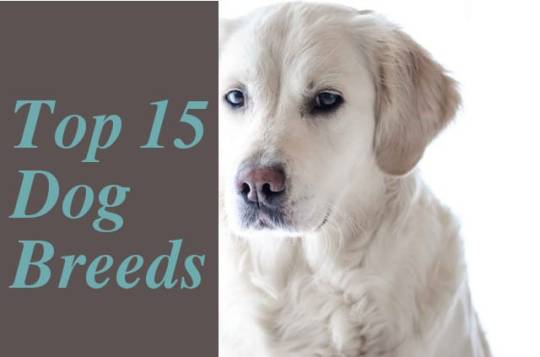
Check out the American Kennel Club's full list of most popular dog breeds in the united states (USA). Some of the topmost spots are of no surprise as they are been occupied by the same breeds for years. But few middle-order spots are quite surprising this year. Check whether Beagles hold in the top 5 positions or someone knocked them down. Do the family-friendly, intelligent Labrador holds its top spot? Also find out the positions of most King Charles Spaniel and French bulldog which surprisingly jumped several positions up, to make to the top 10 most popular dog breeds in America. Well, the rankings are based on registration numbers for the year 2017. Well, let’s find out if your favorite made it to the top 15 lists. I would also brief why these breeds made it top, what people for looking in breeds that made to so many registrations.

There are certain characteristics of each breed, which is liked by dog lovers to keep them around. Choosing the right dog breed for your lifestyle or your family can be a challenge, so let’s make it smile. Scroll down for more information on the most popular breed.
15 . Pembroke Welsh Corgis
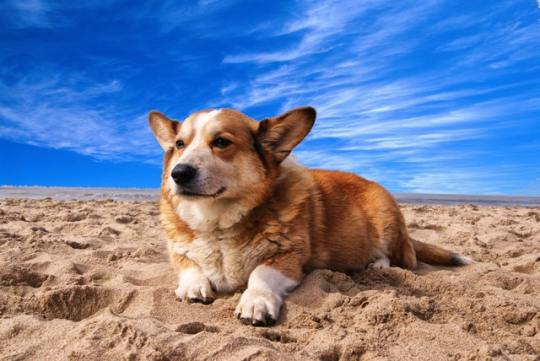
Temperament: Affectionate, Smart, Alert these dogs bred to herd cattle.small but sturdy, short-legged herders.bright, sensitive dog who enjoys playing with his human family and responds well to training. lifespan: 12 – 14 years Potential health problems Intervertebral Disc DiseaseHip DysplasiDegenerative Myelopathy
14 . Great Danes
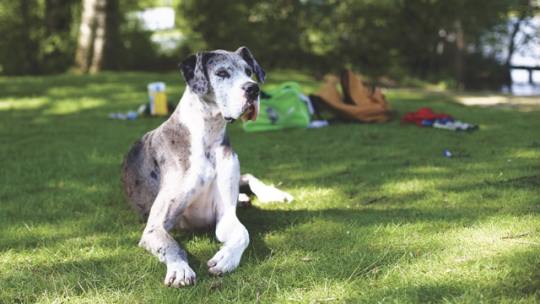
Temperament: Friendly, Patient, Dependable The AKC calls this breed “the Apollo of dogspowerful giants are the picture of elegance and balance.courageous, never timid; always friendly and dependable.Patient with kidsMakes friends easily. lifespan: 8 – 10 years Potential health problems Dilated cardiomyopathyBloat
13 . Dachshunds

Temperament: Friendly, Curious, Spunky Smart and vigilant, with a big-dog bark, they make fine watchdogs.they can be brave to the point of rashness, and a bit stubborn. lifespan: 12 – 16 years Potential health problems Intervertebral Disk DiseaseHypothyroidismEye Issues
12 . Siberian Huskies
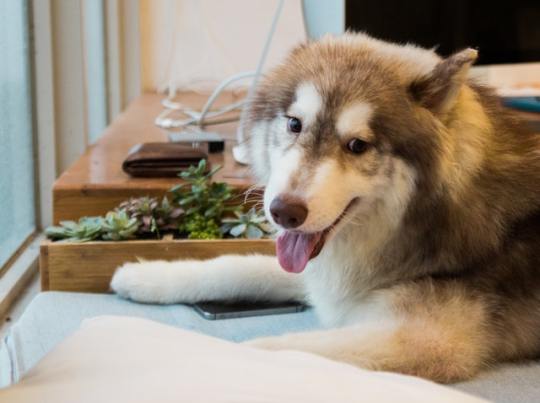
Temperament: Loyal, Outgoing, Mischievous Most energetic dog, which requires a lot of exercise and family time.Better suited for cold temperature regions.Huskies are naturally clean, with little doggy odor. lifespan: 12 – 15 years Potential health problems Hip DysplasiaEye DefectsUveodermatologic Syndrome
11 . Boxers
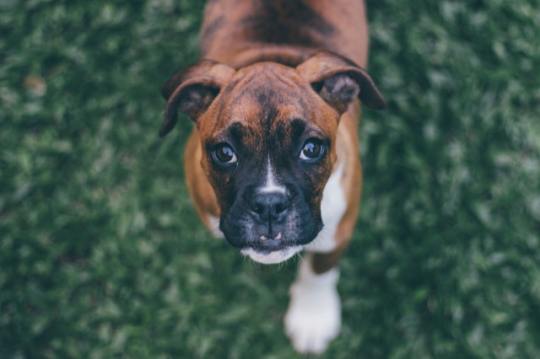
Temperament: Bright, Fun-Loving, Active Developed to serve as a guard, working, and companion dog.Great dog with children due to their patience and protective nature.They are playful and loving, while still being agile and protective of home and family. lifespan: 10 – 12 years Potential health problems Boxer CardiomyopathyAortic/sub aortic StenosisDegenerative Myelopathy
10 . Pointers (German Shorthaired)
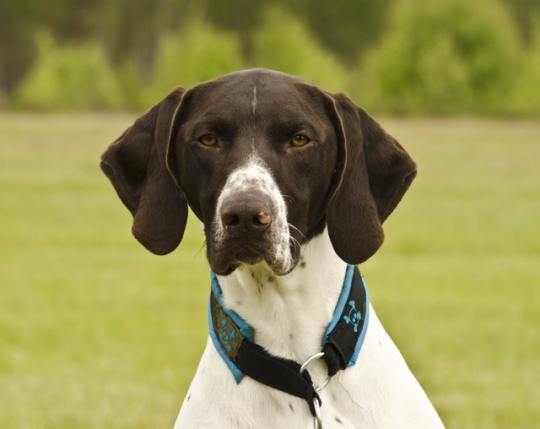
Temperament: Friendly, Smart, Willing to Please These dogs are known for being versatile hunters and gun dogs.known for power, speed, agility, and endurance,Always ready to spend time outdoors like running, swimming or anything that will burn their energy. lifespan: 12 – 14 years Potential health problems Hip DysplasiaCancereye diseases
9 . Yorkshire Terriers

Temperament: Affectionate, Sprightly, Tomboyish small size easy to carry and playfulfavorite among urbanites - easy to take care and portable weight.Have hair and not fur, making them hypoallergenic — good for people with allergies. lifespan: 13 – 16 years Potential health problems Luxating patellaLegg-Perthes DiseaseHypoglycemia
8 . Rottweiler
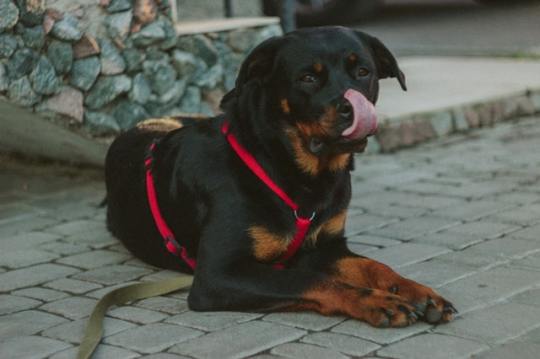
Temperament: Loyal, Loving, Confident Guardian They have an intimidating look.Though early training and socialization make him less aggressive, always good to treat as a guard dogThey make great guard dogs because of their bulky and strong build. lifespan: 8 – 10 years Potential health problems Sub-Aortic StenosisEye IssuesHip Dysplasia
7 . Poodles
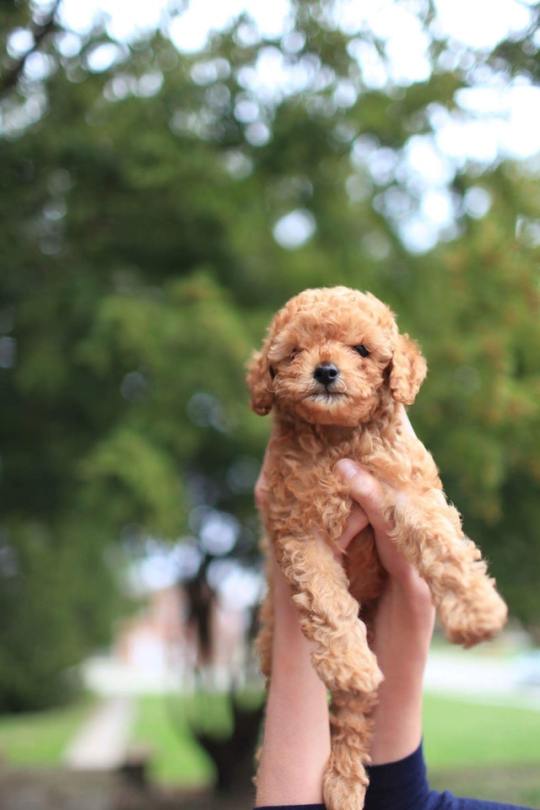
Temperament: Active, Proud, Very Smart Very active dogs which requires exercise every day.Infrequent sheddingextremely intelligent and easily trained. lifespan: 12 – 15 years Potential health problems Hip DysplasiaEpilepsyProgressive Retinal Atrophy
6 . Beagles
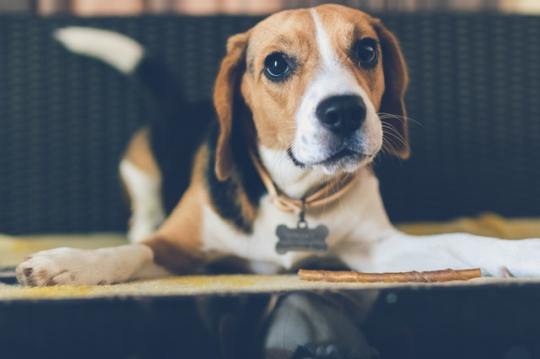
Temperament: Friendly, Curious, Merry Excellent hunting dog and loyal companionThe ability and desire to track down smells, making them excellent working dogs.Beagles are loving and lovable, happy, and companionable—all qualities that make them excellent family dogs. lifespan: 12 – 15 years Potential health problems EpilepsyHypothyroidismCherry Eye
5 . Bulldogs
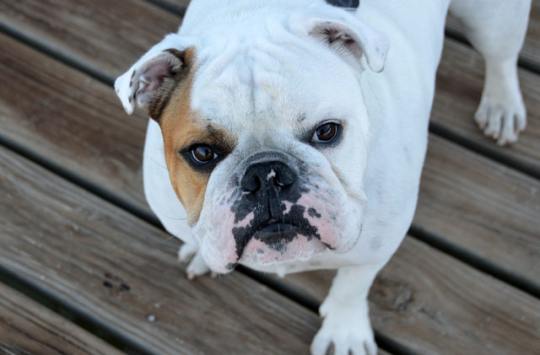
Temperament: Friendly, Courageous, Calm Kind but courageous, friendly but dignified. Bulldogs were looking lot different initially. Due to selective breeding, to get the 'snub' nose look they look different now. Also now people buy them for their looks, not for any of their benefit. Bulldogs will end up a very expensive dog for maintenance. Due to their allergies, skin issues and numerous breathing issues, also they can't give birth naturally must have C-sections. lifespan: 8 – 10 years Potential health problems cardiac and respiratory diseaship dysplasiacherry eye
4 . French Bulldogs
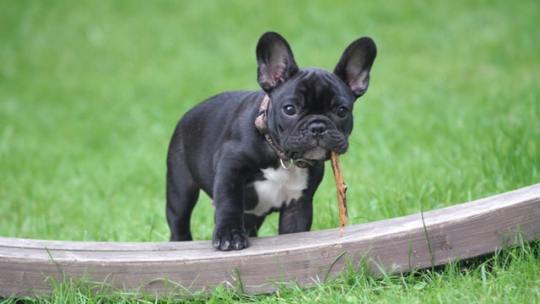
Temperament: Adaptable, Playful, Smart French bulldogs are affectionate and playful.a little bit stubborn in nature, so you’ll need to exercise some patience when training.One among top 5 positions is only due to the small size and its looks. lifespan: 10 – 12 years Potential health problems brachycephalic syndrome or difficulty breathingback problems including ruptured or herniated discs
3 . Retrievers (Golden)
Temperament: Friendly, Intelligent, Devoted
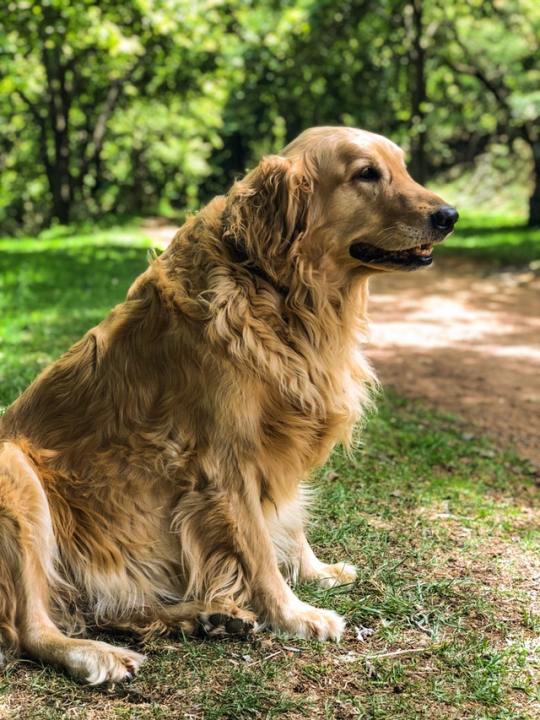
Great beauty, golden coat and trustworthy.Friendly, energetic, easily trainable and have a great personality.Loves outdoor activities anything their human partner is interested in. lifespan: 10 – 12 years Potential health problems hypothyroidismeye disorderselbow dysplasiasub-aortic stenosis
2 . German Shepherd Dogs
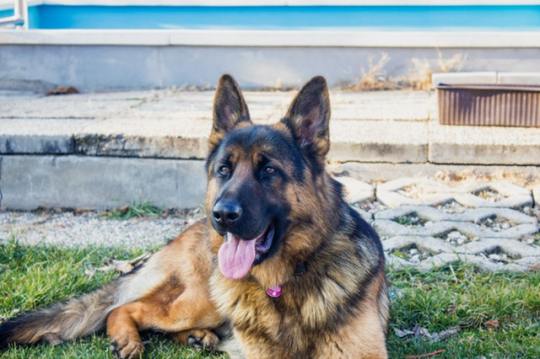
Temperament: Confident, Courageous, Smart More popular in police, military and security for their high discipline.willingness to put their life on the line in defense of loved ones. lifespan: 9 – 13 years Potential health problems Hip DysplasiaElbow DysplasiaPerianal FistulaMegaesophagusOsteoarthritiDegenerative Myelopathy
1 . Retrievers (Labrador)
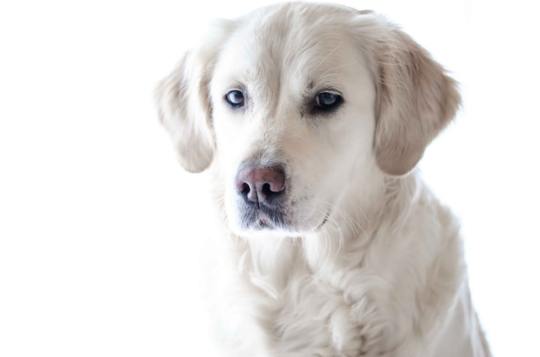
Temperament: Friendly, Active, Outgoing Always a good family dog.Easily socialized, energetic, love for people and intelligent.the enthusiastic athlete that requires lots of exercises to keep physically and mentally fit. lifespan: 10 – 14 years Potential health problems Hip dysplasiaelbow dysplasialuxating patellaBloat
Health Concerns explained
Dogs do usually have pretty good health. Moreover, their human companion will never let his loved ones to get sick. But some breeds are prone to health disorders. Some due to genetics and some catch up from an environment. So let's keep them at bay. Let’s ask questions to your breeder before making your final choice. Let me explain what these diseases or disorders actually mean, knowledge is wealth, keep reading. Intervertebral Disc Disease Intervertebral disc disease is when the discs between the vertebrae bulge or herniate into the spinal cord space. Usually have trouble walking, refuses to jump, is incontinent, won’t eat, or appears anxious. Breed: Corgis, Dachshunds Hip Dysplasia An abnormal formation of the hip socket that, in its more severe form, can eventually cause crippling lameness and painful arthritis of the joints. It is a genetic (polygenic) trait that is affected by environmental factors. Breed: Corgis, Dane, Siberian Huskies, Pointers (German Shorthaired), Rottweilers Degenerative Myelopathy Disease related to the spinal cord in older dogs which eventual paralysis in the hind limbs. Breed: Corgis, Boxer Dilated cardiomyopathy Dilated cardiomyopathy is a degenerative heart muscle condition that gradually weakens the heart’s ability to pump blood effectively. It is usually associated with an enlargement of the left ventricle. Breed: Dane Bloat Bloat is a gastric dilation of the stomach caused by an abnormal accumulation of gas or liquid. Breed: Dane Hypothyroidism Hypothyroidism is a clinical condition resulting from a lowered production and release of T4 and T3 hormones by the thyroid gland. Breed: Doberman pinschers, Beagles, Irish setters, golden retrievers, great Danes, old English sheepdogs, dachshunds, miniature schnauzers, boxers, poodles, and cocker spaniels, Poodles Eye Issues/ Eye Defects Eye issues including cataracts, glaucoma, corneal dystrophy, tear duct anomalies, and progressive retinal atrophy Bree: Dachshunds, Siberian Huskies, Rottweilers, Poodles Uveodermatologic Syndrome Dog's immune system produces chemicals called antibodies to protect its body against harmful substances and organisms such as viruses, bacteria, etc. An autoimmune disorder is a condition in which the immune system cannot tell the difference between harmful antigens and its own healthy body tissues, leading it to destroy the healthy body tissue. Inflammation of the interior of the eye and Loss of skin pigmentation in the nose, lips, eyelids, footpads. Breed: Akitas, Samoyeds, Siberian Huskies Boxer cardiomyopathy The development of ventricular tachyarrhythmias, resulting in syncope and sudden cardiac death. Breed: Boxer Aortic/Subaortic Stenosis Subaortic stenosis is a narrowing (stenosis) of the area underneath, the aortic valve, that causes some degree of obstruction or blockage of the blood flow through the heart. Breed: Boxer, Rottweilers Luxating patella Luxation of the patella is movement or dislocation of the kneecap. Breed: Yorkshire Terriers Hypoglycemia Hypoglycemia is a fast drop in blood sugar levels. Breed: Yorkshire Terriers Legg-Perthes Disease The dog’s hip area begins to receive inadequate circulation of blood, the bone in the dog’s femur weakens and begins to collapse; the cartilage surrounding this can become cracked and malformed. Breed: Yorkshire Terriers Epilepsy Epilepsy, the most common cause of seizures in the dog. Breed: Poodles, Beagles Cherry Eye Prolapsed gland of the eyelid refers to a pink mass protruding from the animal's eyelid; it is also called a "cherry eye." Breed: Cocker Spaniels, Bulldogs, Beagles, Bloodhounds, Lhasa Apsos, and Shih Tzus. Read the full article
0 notes
Note
-softly woofs- What is your favourite doggo?
This is hard for me, being a dog person I love.. like.. a LOT of dogs, but if I have to choose a few top favorites then:
Pitbull, German Shepherd, Husky, Aussie, Dalmatian, Labs, Dachshunds, French Bulldogs, Bull Terriers, Akita, Shiba Inu, Mastiff’s, Golden Retrievers, Cavalier king charles spaniel, chow chow, pugs, and.. a bunch more!
-Turtle
2 notes
·
View notes